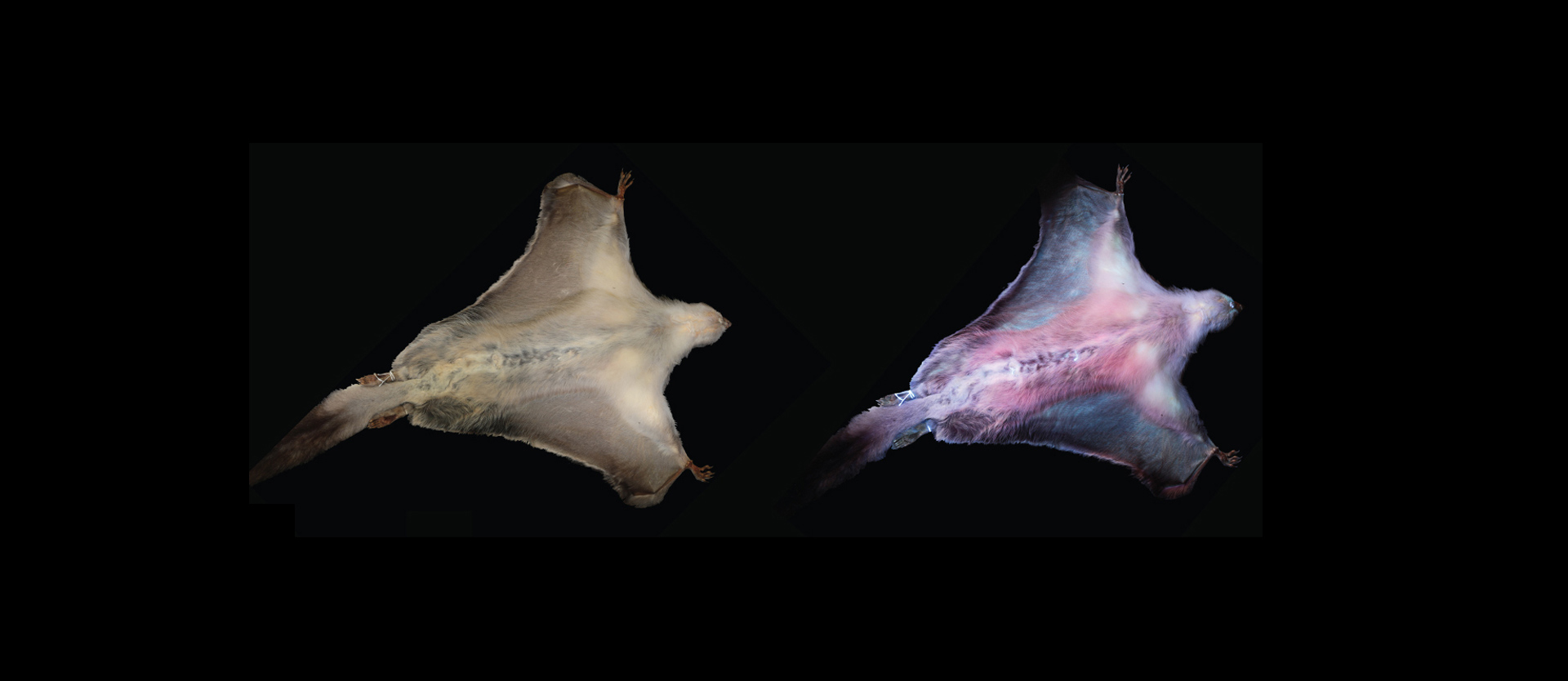
Fleeting glow
Some mammals glow in the dark. A team of researchers at the Museum für Naturkunde in Berlin has now discovered why this is so.

Nature is rich in colour. But we only perceive a small part of natural light as colour. Ultraviolet light, for example, is invisible to the human eye. However, in a process known as photoluminescence, UV light can be absorbed and re-emitted as visible colour. Photoluminescence is a well-known phenomenon in invertebrates. For example, scorpions emit blue light when exposed to UV light. In recent years, photoluminescence has also been discovered in various mammals such as hedgehogs, flying squirrels and platypuses.
An international team led by the Museum für Naturkunde Berlin and the Humboldt-Universität Berlin has now tracked down the chemical origin of photoluminescence. The scientists analysed fur samples from platypuses, opossums, hedgehogs, weasels and flying squirrels. They found that the compounds responsible for photoluminescence are porphyrins deposited in the hair. The team also observed a rapid loss of photoluminescence because porphyrins decay rapidly when exposed to sunlight. Porphyrins serve as building blocks for several vital proteins in mammalian biology. They are produced by numerous organs. However, overproduction of porphyrins can lead to skin lesions, among other things. Mammals prevent the accumulation of porphyrins by using their hair as a store. There, sunlight effectively breaks down these molecules. The temporary presence of porphyrins in the hair in turn causes the fur to glow.
Since the mammals studied that deposited porphyrin in their hair are distantly related, the scientists suspect that this strategy is widespread. Moreover, the hypothesis explains why nocturnal mammals glow while their diurnal relatives do not. Both store porphyrins in their fur, but the breakdown is much faster when the sun shines.
Original publication:
SLD Toussaint et al.:
Fur glowing under ultraviolet: in situ analysis of porphyrin accumulation in the skin appendages of mammals.
Integrative Zoology, Open Access, DOI: doi.org/10.1111/1749-4877.12655









